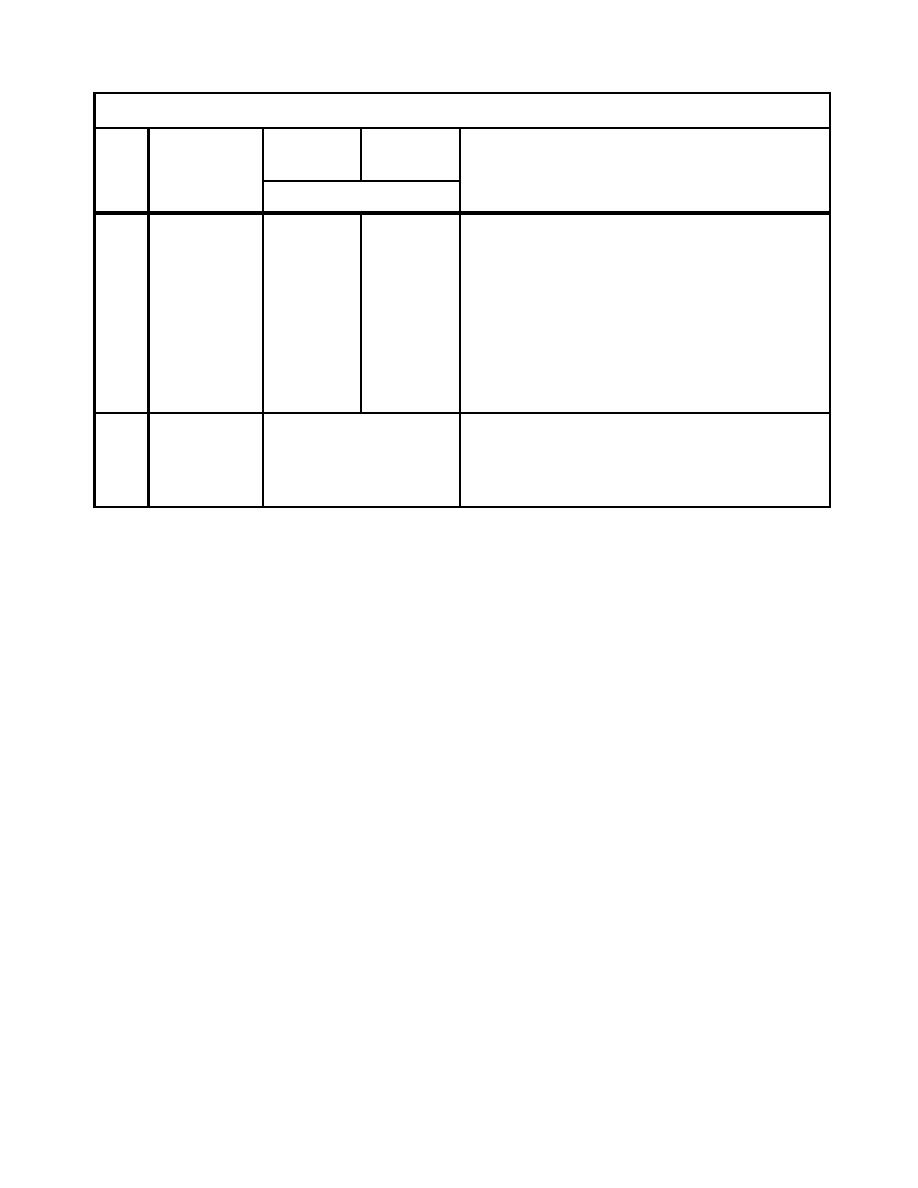
Chapter 3
Table 3.4. Overruns.
Class A
Class B
Runway
Runway
Item
Item
No.
Description
Requirement
Remarks
To avoid abrupt changes in grade between the
First 90 m
Same as
5
Longitudinal
first 90 m [300 feet] and remainder of overrun of
[300 ft]
last
Centerline
a Class B runway, the maximum change of grade
same as
300 m
Grade
is 2.0 percent per 30 linear meters [100 linear
last
[1,000 ft]
feet].
900 m
of runway
[3,000 ft]
of runway.
Remainder:
1.5% Max
From centerline of overrun. Transition from the
6
Transverse
Min 2.0%
runway and runway shoulder grades to the
Grade
Max 3.0%
overrun grades to be made within the first 45
40 mm [1- in.] dropoff
meters [150 feet] of overrun.
at edge of paved overrun
NOTE: Geometric design criteria in this manual are based on aircraft-specific requirements and are not direct
conversions from inch-pound (English) dimensions. Inch-pound units are included only to permit reference to the
previous standard.
3.11. Runway Clear Zones. Runway Clear Zones are areas on the ground, located at the ends of each
runway. They possess a high potential for accidents and their use is restricted to be compatible with
aircraft operations. Runway Clear Zones are required for the runway and should be owned or protected
under a long term lease. Table 3.5 shows the dimensional requirements for runway clear zones. Layout
of the clear zones is shown in Figures 3.4, 3.5, 3.6, 3.7, 3.10, 3.13 and 3.17.
3.11.1 The Clear Zone consists of two distinctly different areas, the graded area and a land use
control area. The graded area of the Clear Zone is prepared and maintained as an aircraft safety
area. Preparation of the Graded Area must comply with the criteria given in this manual. The
remainder of the Clear Zone is a land use control area intended to protect people on the ground.
Department of Defense Instruction (DODI) 4165.57, and individual service component directives
govern land use within this area (see Attachment 4). USAF land use guidelines are provided in AFI
32-7063, Air Installation Compatible Use Zone Program, and AFH 32-7084, AICUZ Program
Manager's Guide.
3.11.2. For USAF, a mandatory area of frangibility extends through the land use control area to the
end of the Clear Zone, or to the base boundary, whichever is closer to the runway. Items that must
be sited there due to their function must be made frangible (see attachment 14). Items that cannot be
made frangible (such as highway guard rails) but must be located within this area for urgent and
compelling reasons must be waived by the MAJCOM before they are constructed. This is to ensure
all alternatives are considered before non-frangible structures are sited within this area.
3.12. Accident Potential Zones (APZ). APZs are areas on the ground located beyond the clear zone of
each runway. They possess a potential for accidents and their use is restricted in accordance with DoD
3-30


 Previous Page
Previous Page
